




Introduction
The process of connecting multiple computers together for the purposes of sharing data, offering technical support, and communicating is known as computer networking. The technology that connects various computer systems is known as the internet. The world has undergone a revolution thanks to networking technology, which has also opened up new opportunities for each country's overall growth.
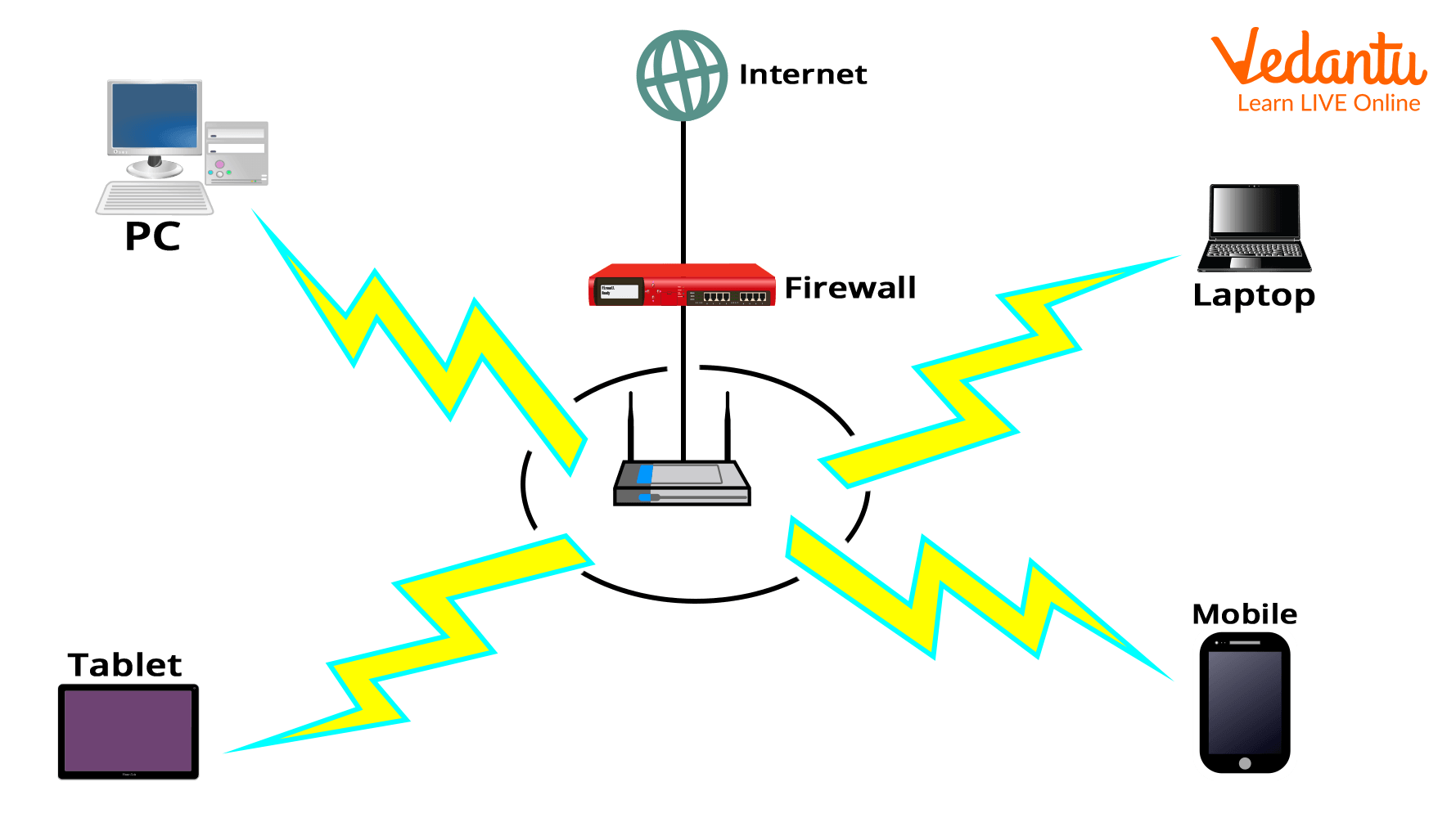
Computer Networking
Types of Networks
A Computer Network is typically classified based on its size and purpose. The following are the most commonly used computer networks:
LAN i.e. Local Area Network
WAN i.e. Wide Area Network
MAN i.e. Metropolitan Area Network
PAN i.e. Personal Area Network

Different Types of Networks
Let's discuss them in detail.
LAN (Local Area Network)
A Local Area Network, or simply LAN, is a method of connecting a few computers in a given location. It is typically used for a single commercial office, residential apartment, school etc.
The main goal of such interconnectivity is to create a communication system to make work easier. However, in such connections, other devices such as laser printers, fax machines, and so on can be attached. It covers an area ranging from 10-15 kilometers.
Uses of LAN Network
To rapid transfer of data over a limited geographical area.
To allow for quick interconnections between individual computer units.
The number of users on a local area network can range from two or three to thousands.
Software and hardware can be used together.
With the use of emails, chats, and web forms, LAN offers its users quicker and highly customized services.
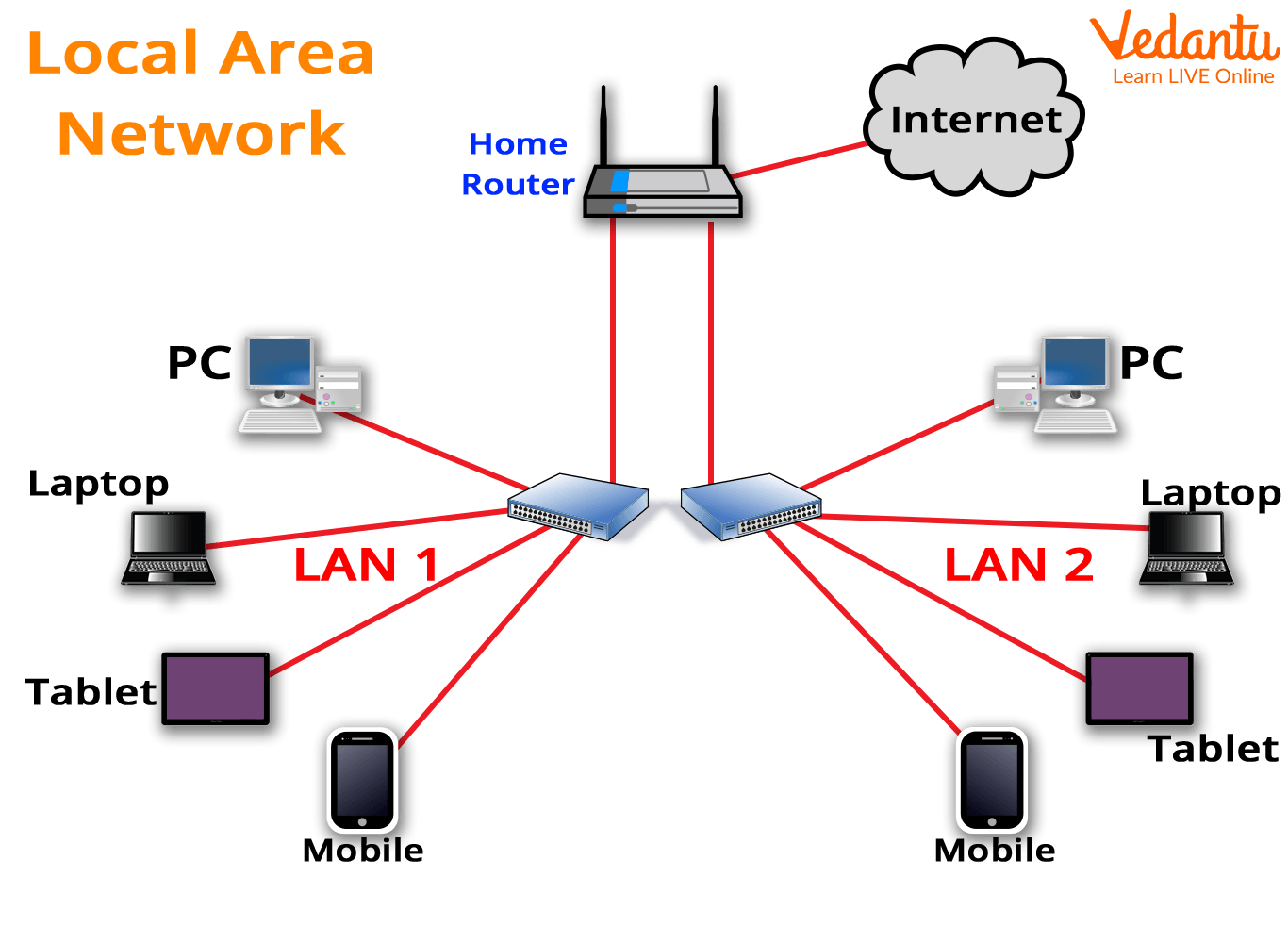
Local Area Network
WAN (Wide Area Network)
It is a network system that extends a large geographical area around the world. WAN services are provided by both Government and private organizations. The network also allows you to access databases that are located in different locations. The WAN system is extremely beneficial to MNCs and other large corporations that are offering online services. The internet is one of the world's largest WANs.
Uses of WAN Network
To enable organizations with international branches to communicate, exchange information, and stay connected between branches.
When employees arrive at work, WANs enable them to access the data they require to complete their tasks.
It enables businesses to share information with clients and partners even if they are in other countries.
It involves communication via a variety of different technologies. Point-to-point WANs such as Point-to-Point Protocol (PPP) and High-Level Data Link Control (HDLC) are examples of these technologies.
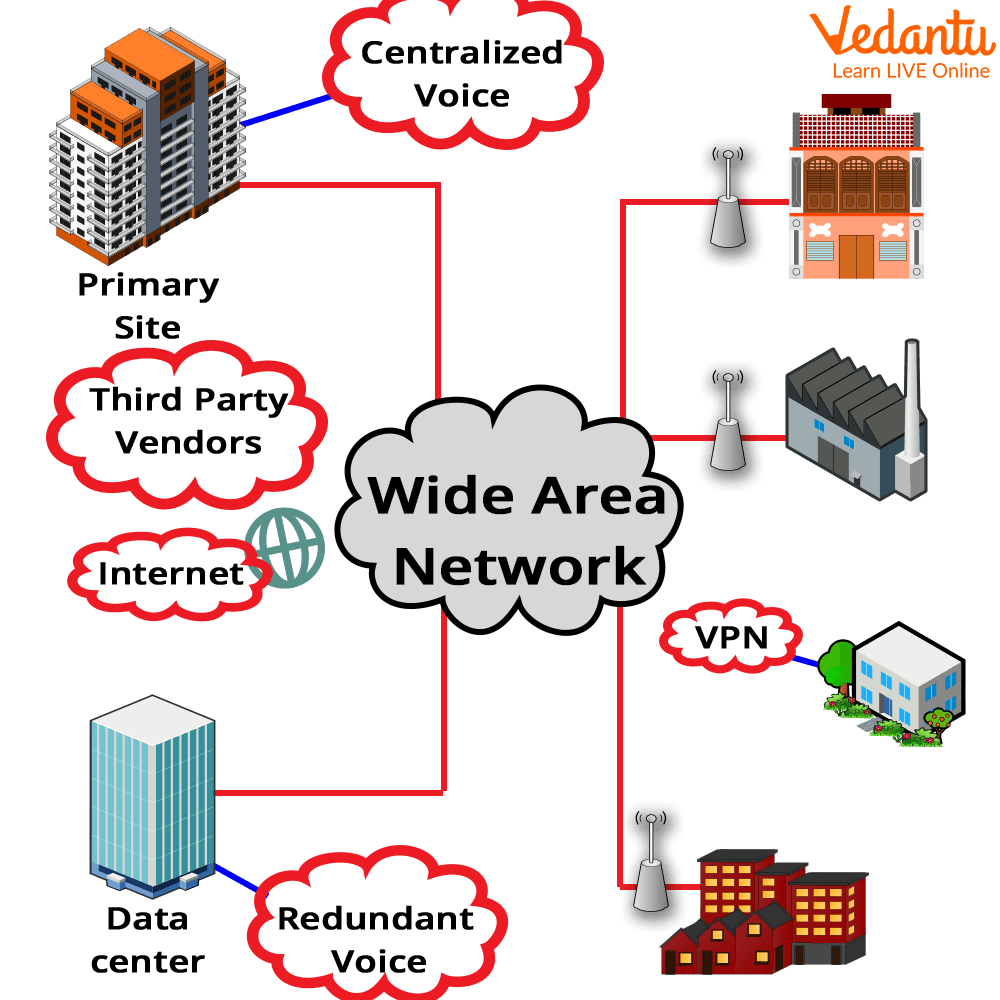
Wide Area Network
MAN (Metropolitan Area Network)
It is a network that connects multiple LANs to form a larger network that covers a larger geographic area. Government agencies use MAN to communicate with citizens and private businesses. MAN connects various LANs to one another via a telephone exchange line. It has a greater range than a Local Area Network (LAN).
Uses of MAN
To communicate between city banks.
It is applicable to airline reservations.
It could be used in a city college.
It can also be used for military communication.
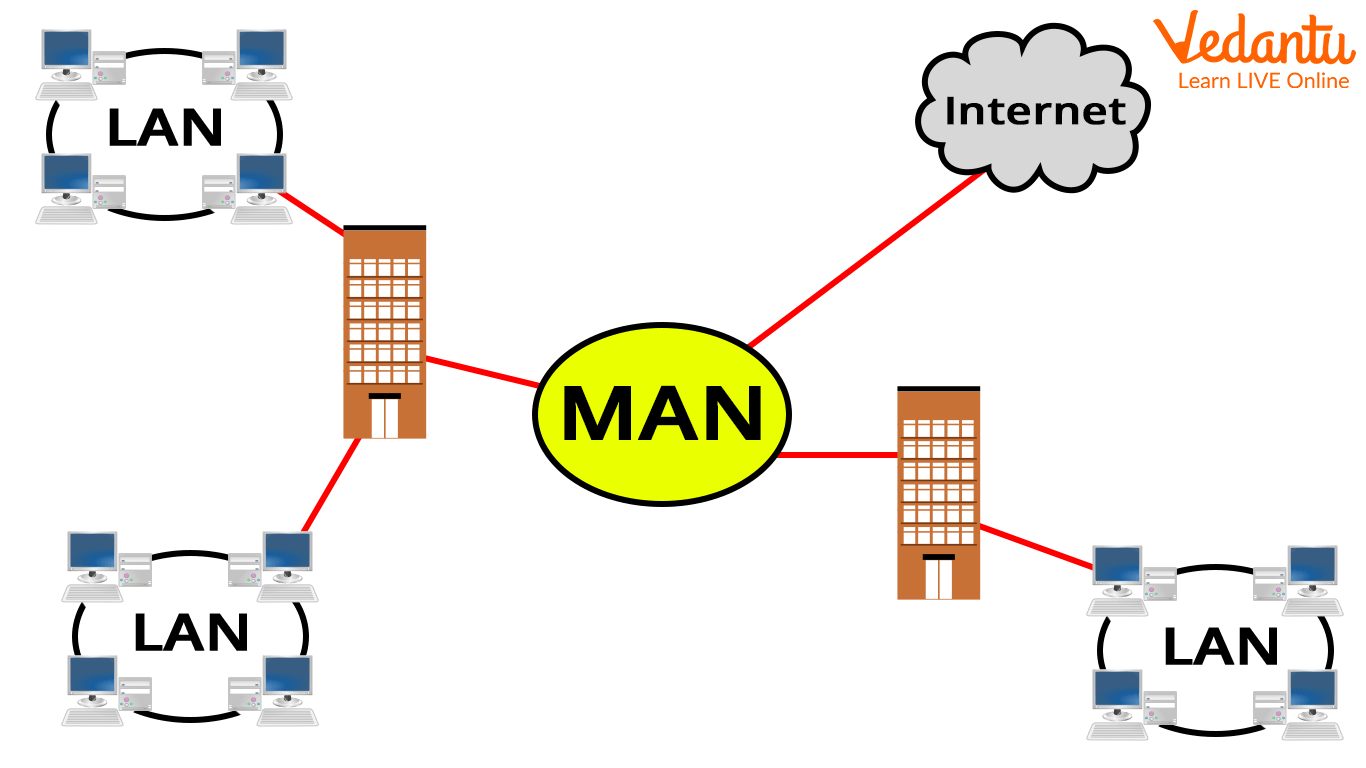
MAN (Metropolitan Area Network)
PAN (Personal Area Network)
It is a network that is set up by a single person, typically within a 10-meter radius. It is used to connect computer devices for personal use. It has a 30-foot radius. Personal computer devices used to develop a personal area network include laptops, mobile phones, and play stations.
Uses of PAN
It is mostly personal devices networked in a small area.
Allows you to manage the interconnection of IT devices in a single user's environment.
It can connect to the internet wirelessly via WPAN.
PAN appliances include cordless mice, keyboards, and Bluetooth systems.
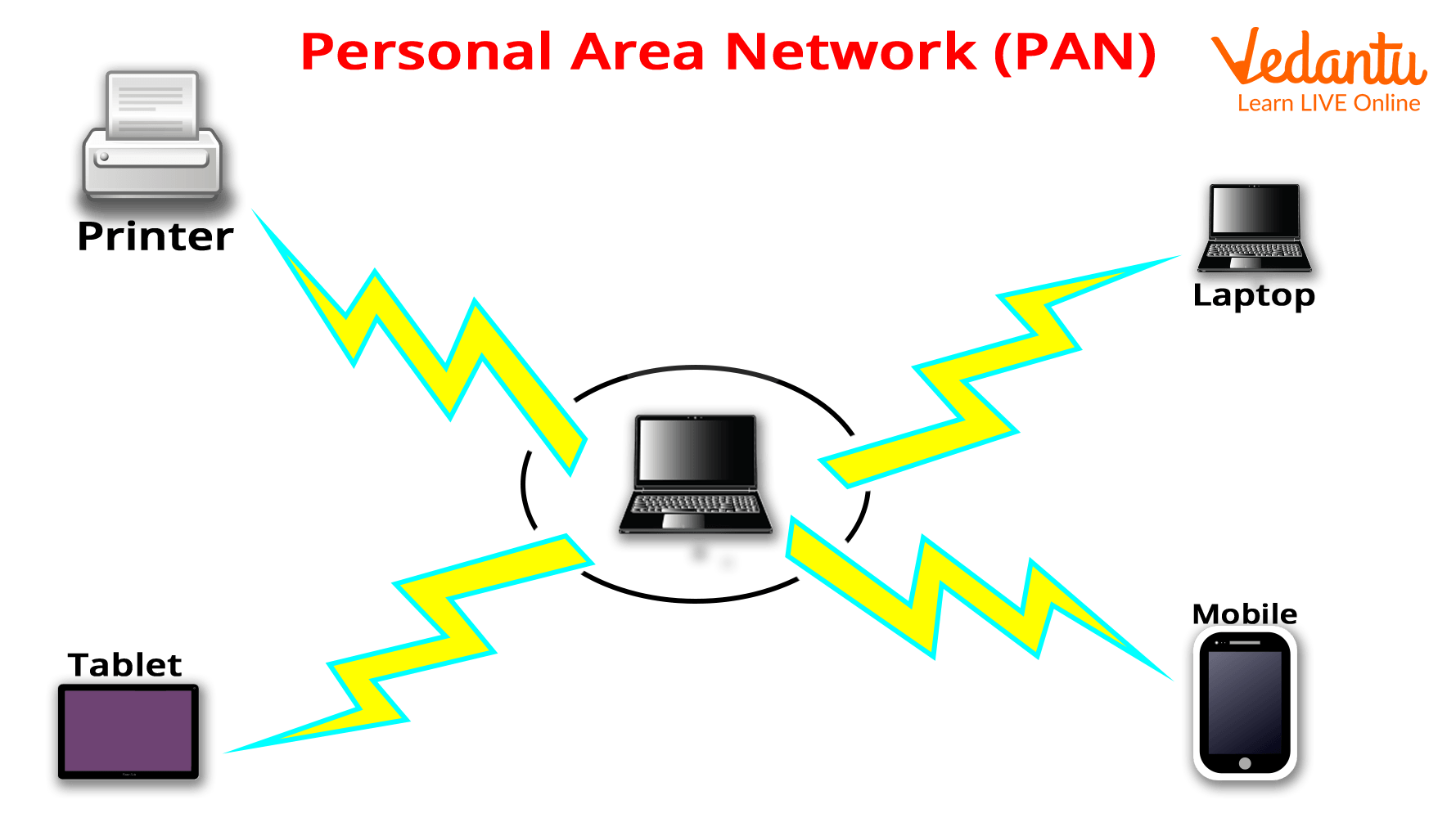
Personal Area Network
Things to Know
The Personal Area Network concept was first proposed by Thomas Zimmerman, a research scientist.
Due to restrictions on size and distance, networks can only be a certain size.
A local area network's speed can easily be increased to or exceed 1 Gbps.
Learning by Doing
1. Write abbreviations for:
ATM
HDLC
PPP
PSTN
2. Which of the following is considered the world's largest network?
Usenet
Ethernet
Internet
PSTN
None of the above
3. Which of these uses a WAN the most frequently?
University
School
MNCs Company
Local Company
Sample Questions
1. What are types of LAN?
Ans: Client/server LANs and Peer-to-Peer LANs are the two main types of LANs or local area networks. A client/server LAN is made up of various client devices that are linked to a central server. The server manages application access, device access, file storage, and network traffic.
There is no central server in a peer-to-peer local area network, and it cannot handle heavy workloads like a client/server local area network. This type of LAN is smaller in size, with each device contributing equally to network operation.
2. Which network has the smallest geographical coverage?
PAN
MAN
WAN
LAN
Ans: D) LAN i.e. Local Area Networks
3. What are the advantages of networking?
Ans: Here are some of the most significant benefits of networking.
Improve business relationships.
Networking is about giving rather than taking.
Get new ideas.
Increase your visibility.
Increase your knowledge.
Get career advice and support
Increase your confidence.
Summary
We place a high value on networking. The majority of the work is dependent on computer networks. This chapter taught you about various types of networks: LAN, WAN, PAN and MAN
FAQs on Different Types of Networks
1. What are the five network components?
Clients, servers, channels, interface devices, and operating systems are the five basic components of a network.
2. What are the two kinds of IP addresses?
Internet Protocol (IP) addresses to connect the Internet and your network. IP addresses are classified into two types: static and dynamic.
3. Which LAN cable is used?
A LAN cable connects computers and hardware to form a local area network (LAN). Cat5 and Cat6 cables are the most commonly used cables.









